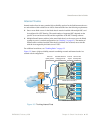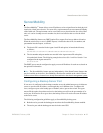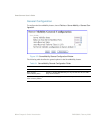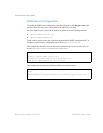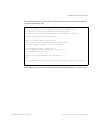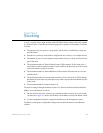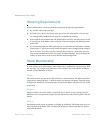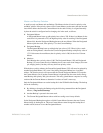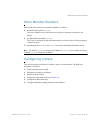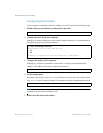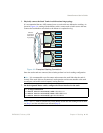
BMD00082, February 2009 43
CHAPTER 4
Stacking
A stack is a group of up to eight switches with VSE SmartConnect software that work together
as a unified system. A stack has the following properties, regardless of the number of switches
included:
The network views the stack as a single entity, and the stack is identified by a single net-
work IP address.
Switches in a stack may reside within a single blade server chassis, or in multiple chassis.
The number of ports in a stack equals the total number of ports of all the switches that are
part of the stack.
The maximum number of Virtual Switch Groups (VSGs) remains 32 (the same as for a
non-stacked switch), though the number of ports which can be placed in any VSG is equal
to the total number of ports in the stack.
The maximum number of Virtual Machines (VMs) remains 1024 (the same as for a non-
stacked switch).
The maximum number of external trunks remains 64 (2 for each of the 32 VSGs) though
the number of ports which can participate in any trunk is equal to the total number of ports
in the stack.
The maximum number of internal trunks is 56.
The stack is managed through the Master switch. Use Telnet or the Browser-Based Interface
(BBI) to access the Master, as follows:
On any switch in the stack, connect to any external port that is not part of an active trunk
(see the note on page 31), and use the IP address of the Master to access the Master switch.
Use the management IP address assigned to the Master by the management system.
The Master switch pushes configuration changes and run-time information to the Member
switches.



